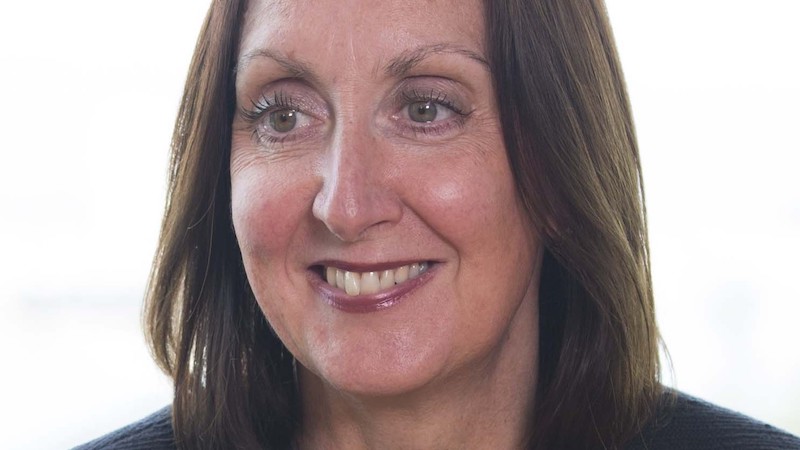Sterling high yield bond funds have survived their first liquidity test amid the coronavirus crisis, having caught the attention of the Financial Conduct Authority several weeks ago, but defaults still loom with investors mixed on what that means for the fixed income sector.
The FCA had name checked bond funds as much as property funds in its speech on liquidity mismatch in daily dealing vehicles, which it delivered in a remote presentation to the Investment Association a fortnight ago. That’s despite the high profile suspensions of property funds during the aftermath of the Brexit referendum and the suspension of the M&G Property Portfolio in December due to heightened redemptions.
The FCA pointed to a research paper from the European Securities and Markets Authority (Esma), published in 2019, showing that up to 40% of high yield bond funds within the EU could experience a liquidity shortfall in a severe redemption shock scenario.
“The FCA is right to be concerned and monitor the situation but for high yield bond funds the daily dealing structure is suitable for 95% plus of the time,” says Octopus Investments senior analyst Tom Buffham, who sits on the multi-manager team. “The remainder of the time funds do have tools to manage redemptions.”
The fact no sterling high yield bond funds have been forced to suspend dealing implies mechanisms in place have been effective so far, says Morningstar senior manager research analyst Louise Babin.
High yield funds hold up despite evaporation of liquidity
High yield managers Square Mile Investment Consulting and Research has spoken with reported bid/ask spreads increasing almost tenfold – similar to the financial crisis – from their typical level of approximately 50 to 100 basis points in normal market conditions.
“By all accounts liquidity in high yield markets has almost evaporated for long periods since the market volatility erupted at the start of March,” says Square Mile investment research analyst Paul Angell. “The fund management groups we have spoken to have referenced bid/offer prices in the high yield market stretching to 400-800 basis points.”
> See also: Eastspring liquidates funds in Asia on coronavirus outflows
Tilney head of multi-asset Ben Seager-Scott reckons high yield funds appear to have held up well despite liquidity issues across fixed income.
“I don’t believe the current level of flows from daily dealing funds have caused any significant issues yet, with much of the activity globally actually occurring through ETFs, and ETFs have held together pretty well – probably better than many people expected.”
Tilney’s limited exposure to high yield, 2.5% in its Growth portfolio, is via the iShares Global High Yield Corporate Bond ETF. The iShares product is also favoured by Octopus Investments for ETF allocations, although it currently has no exposure to the passive fund. Its fixed income fund has a 15% allocation to high yield.
The date that bond markets reached a turning point
Threadneedle High Yield Bond fund manager Roman Gaiser says markets reached a turning point last week due to central bank support.
The European Central Bank has created the €750bn pandemic emergency purchase programme to run alongside its existing bond buying programme, while the US Federal Reserve has followed in its footsteps with its own corporate bond purchase programme announced on 23 March.
Gaiser says: “During the first wave, up to 24 March, the market was in a sell environment and we saw that often better names were being sold more aggressively than lower quality names as the selling was very much liquidity driven.
“ETFs experienced NAV discounts up to 8%. It was a very one-sided environment with actual bids being below screen prices.”
Now there is more two-way pricing in markets and greater dispersion between good names and lower quality names.
Remote working influences bond markets
Baillie Gifford partner Jan Oliver (pictured) reckons remote working is also influencing bond market dynamics.
“As well as being a significant economic and market event, the Covid-19 virus is also causing most market participants to work from home or other contingency locations which is exacerbating the difficulties of price discovery and matching buyers with sellers,” Oliver says.
The Baillie Gifford High Yield Bond fund has not seen any significant outflows, she says while noting that it is a different story from a sector-wide perspective.
“Liquidity is best in BB-rated bonds, which make up the bulk of our fund, as the magnitude of default risk there is lower, thus attracting buyers in these difficult times is easier,” she says.
Liquidity buffers, derivatives and pricing ease pressure on funds
The FCA named cash buffers, swing pricing and notice periods among the tools asset managers can use to address liquidity mismatch in open-ended funds.
Babin adds that high yield bond managers in particular will often hold a liquidity buffer constituting government bonds paired with derivatives, like CDS indexes, to get more liquid exposure to the asset class.
Angell notes this is one way high yield managers have been managing redemptions stating these derivatives have remained very liquid because unlike individual bonds they are centrally cleared by investment banks.
Alternatively, portfolio managers can sell off their relative outperformers in a move that “acts as a natural rebalancing of portfolio positioning”. In contrast, trading across the full portfolio in a stressed environment would require a lot of work by dealers and could be more punitive to exiting investors.
> See also: M&G stock keeps tumbling as Richard Woolnough strategy sheds £5bn
Both the Threadneedle and the Baillie Gifford high yield funds are among those that charge dilution levies so that costs of redemptions are born by exiting investors.
The fund pricing dealing committee at Columbia Threadneedle is currently meeting daily, rather than monthly in the normal course of business, to monitor liquidity in markets and funds, says Gaiser.
“The application of a dilution adjustment ensures that we continue to offer daily liquidity as far as possible to those clients who wish to redeem, whilst ensuring that ongoing investors are not adversely impacted by the costs of trading to meet redemptions.”
As of Tuesday, the dilution adjust was -1.50% for liquidations and 1% for creations.
Tapping into bigger markets facilitates liquidity in sterling funds
The liquidity profile of sterling high yield funds has been improved by fund managers increasingly tapping into larger markets, says Babin.
“The GBP high yield universe is smaller than it’s EUR and USD counterparts, and typically this would mean less liquidity as there are usually fewer market participants looking at smaller markets. However, high yield bond funds are increasingly investing across global markets and hedging back the currency exposure meaning they are more able to manage their liquidity profiles.”
Baillie Gifford High Yield Bond fund holds 21% in sterling-denominated debt with 76% hedged back to sterling and the remainder in cash.
“We can’t see any evidence of any real bifurcation or additional aversion to sterling high yield than usual. However, the sterling weakness last week did make sterling high yield better offered compared to the other markets although this has since calmed.”
Threadneedle High Yield Bond holds 17% in sterling assets and 83% hedged back from euros and US dollars.
Is the worst yet to come for high yield funds?
Nonetheless, Goldman Sachs still thinks the worst is yet to come for high yield. In a note issued Tuesday, Lotfi Karoui argued investment grade spreads peaked on 23 March, although are set to remain in recession territory for the next two quarters.
“By contrast, the numerous fundamental headwinds facing the HY market will likely push spreads wider from current levels,” Karoui said.
Goldman Sachs is forecasting the 12-month trailing default rate will increase to 13% over the course of 2020 in its base case scenario or 17% in a more pessimistic scenario.
But M&G high yield portfolio manager James Tomlins says a significant risk premium is already priced in. Assuming a 30% recovery rate, markets are already pricing in a five-year cumulative default rate of 44%, Tomlins says.
“The prior record default rate was 31% and the average default rate during recessions was 17%, using data all the way back to 1980. Buying high yield with spreads over 900bps has never lost money over a 12-month holding period historically and the median 12-month return has been 28%.”
Defaults are unlikely to have a major impact on liquidity given sharp increases in default risk are already priced in, says Columbia Threadneedle senior client portfolio manager Angelina Chueh. “We are already seeing many names trading below a price of 50 which can be taken as indication of the increased expectation.”







